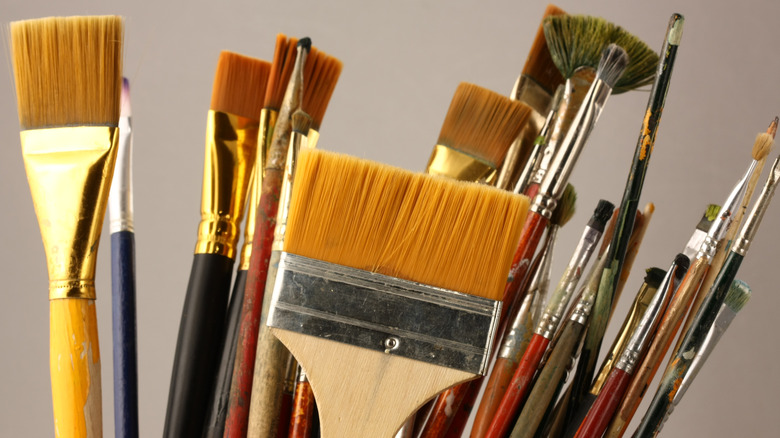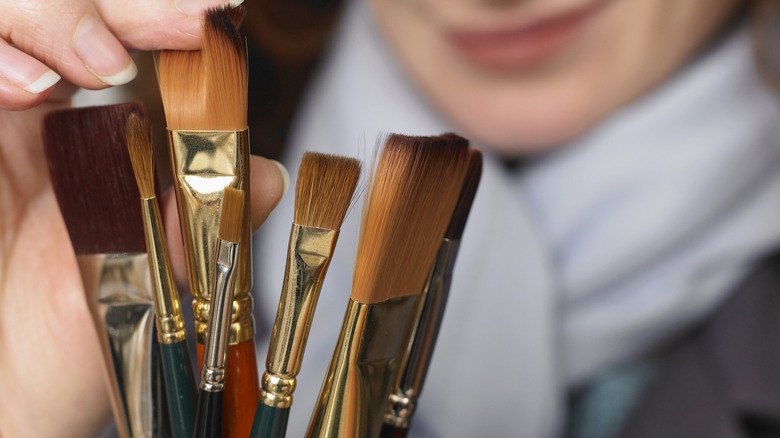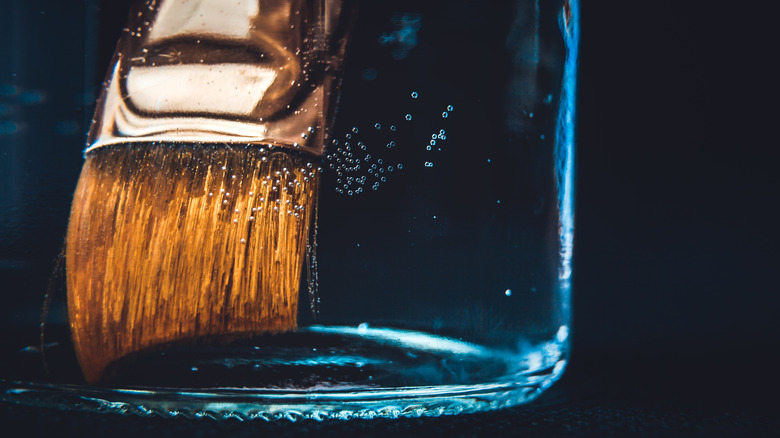The Clever Paintbrush Hack That Will Revolutionize Your Dusting Game
A paintbrush doesn't have to be a one-and-done item you stick in the back of a drawer after calling it quits on a paint project. You can use it to dust, too! The fine bristles of a paintbrush can get into the nooks and crannies basic dusters either miss or are just too cumbersome to access.
Consider the gentle way the bristles of a paintbrush pick up and deposit paint. The same concept applies to dusting. Delicate items like blinds, lampshades, books, porcelain, and more can be dusted with a paintbrush without the fear of damaging the item. Small and hard-to-reach places that are often overlooked or forgotten when dusting can also be accessed easier with a paintbrush. This includes light fixtures and switches, ceiling vents, plants, and even the corners of your home.
Paintbrushes come in a variety of sizes, too, giving you plenty of options to match your needs. Most have a width of 1 to 5 inches. A wider paintbrush will be good for basic dusting as you can cover more surface area. However, if you're looking to use a paintbrush to dust a very specific item or area that is oddly shaped or narrow, you may want to invest in an angled paintbrush or one with a smaller width.
Synthetic versus natural paintbrushes
The type of paintbrush you choose to dust with could simply be a matter of what's readily available. If you already have some in the house, grab one and get to dusting! If you're looking to buy a paintbrush, though, there are key differences in the types of bristles.
Synthetic brushes can be made from a variety of materials. Most synthetic brushes are made of either polyester or nylon, or the brush can be a combination of the two. Polyester bristles stay together better, but nylon bristles make for a more level finish. In a dusting scenario, a nylon brush may prove to be best for delicate items.
On the other hand, natural brushes are made from an animal's natural hair. These brushes are typically considered the best overall option for dusting, likely because the bristles of a natural brush are quite soft and flexible. Some people, though, may find it difficult to use an item sourced from an animal. These brushes are also more expensive because of the production process. Because of this, synthetic brushes may be the winning choice when turning a common paintbrush into your next revolutionary cleaning item.
Cleaning your paintbrush after dusting
Once you complete your dusting duties, you'll want to give your paintbrush a good clean. The process can be done in much the same way you would clean a typical synthetic duster. The first step is the easiest — shake it off! You can either step outside to shake and brush off excess dust or do so inside a trash bag. This will keep that dust you so diligently cleaned from reentering your tidy space.
If dust remains on the paintbrush, you'll want to make up a bowl of warm soapy water. Dip only the bristles of the brush into the water and stir. After that, rinse the bristles in clean water and let them air dry. Air drying is the key here. If you attempt to dry the paintbrush in your dryer, you could end up damaging the bristles or even the dryer itself if the brush contains any metal in the handle.


